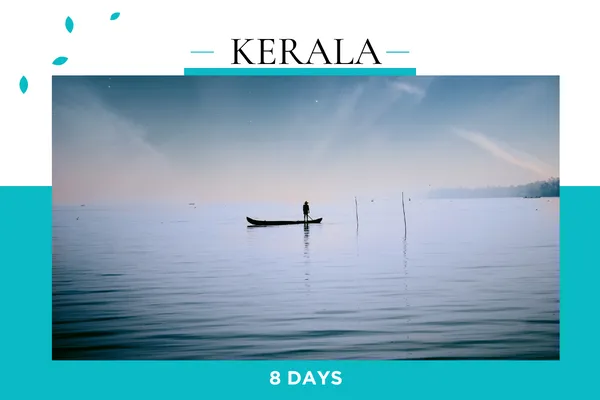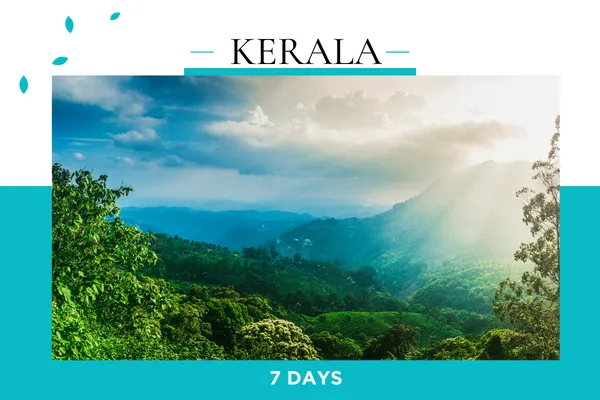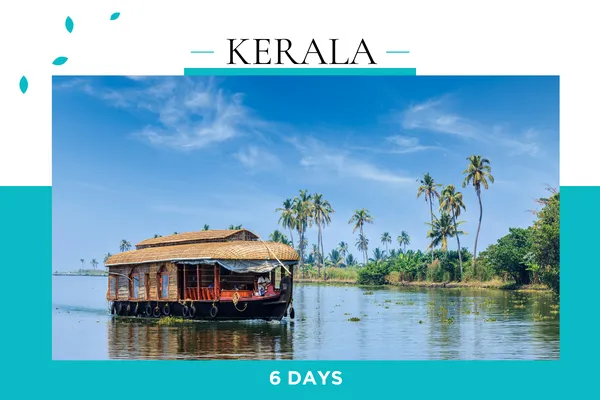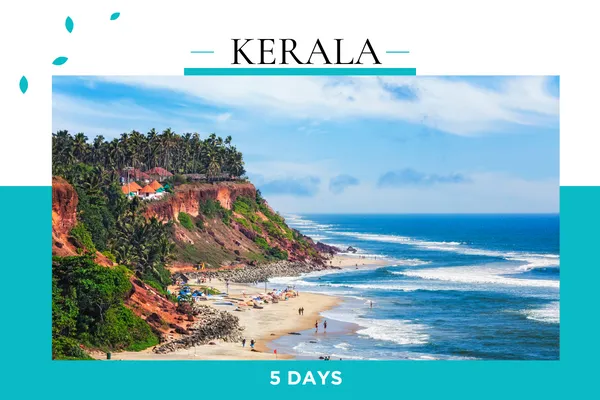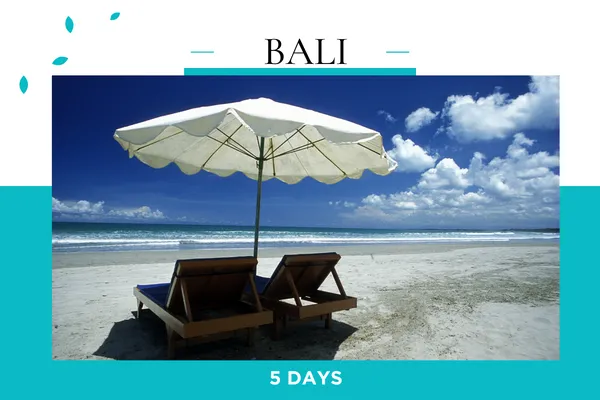
Travel Essentials Nepal
Table of contents
1. Introduction
2. Arrival Information
3. Passport & Visa
4. Customs
5. Baggage
6. Airport Tax
7. Foreign Currencies and credit cards
8. Communications
9. Internet Services
10. Electricity
11. Climate
12. Language
13. Business Hours
14. Holidays
15. Guidelines for staying in Nepal
16. Clothing
17. Health
- Food & Drink
- Smoking
- Health checklist
- Acute Mountain Sickness & Altitude illness
18. Safety and Security
- The basic non-negotiable minimum guidelines
- Nightlife
- Theft
- Excursion Safety
- Transportation
- Tourist Police
19 Cultural Etiquettes
20 Bargaining
21 Tipping
22 Emergencies
23 Important Contact Numbers
Namaste!
Welcome to Nepal. With 45 years of experience in this tourism industry, we would like to share the most important information about our country with this packet for our valued clients.
2. Arrival Information
You will arrive at Tribhuvan International Airport. You will need to fill the White Arrival Immigration card, which is placed at the arrival terminal, and proceed to Immigration. After the immigration officer has stamped the passport, you will need to take the escalator down to baggage claim area and identify your luggage (please do have your baggage tags ready with you as there will be officer/s checking the same before you leave the area).
Technically, visitors cannot be met inside secured areas (including Immigration, Customs and Baggage Claim area) but on case by case basis, we can help assist the same if we receive the written notice at least 72hours prior the arrival of the guests at an additional cost.
3. Passport & Visa
All visitors must have valid passport and Visa. Visa can also be obtained at the nearest Nepal Embassy or Diplomatic Mission. A valid passport and one passport -size photo with a light background is required. Immigration Department has not specified the size of the passport-size photo.
a. Tourist Visa on Arrival
A valid passport with at least six months validity, one passport size photo and a duly filled visa application form are required to obtain tourist visa to enter Nepal. Visa fee should be paid in any equivalent cash but it is best advisable to make the payment in US Dollar cash. Traveller cheques, personal cheques and credit cards are not accepted for visa fees.
|
VIsa |
Duration |
Fees |
|
Multiple Entry |
15days |
US$ 25 or equivalent convertible currency |
|
Multiple Entry |
30days |
US$ 40 or equivalent convertible currency |
|
Multiple Entry |
90days |
US$ 100 or equivalent convertible currency |
*Note: The above-mentioned visa fees are based on per person and are subject to change without prior notice.
For More information visit - http://www.immi.gov.np/visa
Indian Nationals: For Indian Nationals to travel to Nepal, visa is not required. However a valid passport or Voter’s ID card needs to be presented to enter Nepal.
b. SAARC Nationals:
For first visit in one visa year (January to December), gratis visa for 30 days is available only for nationals of South Asian countries like Bangladesh, Bhutan, Maldives, Pakistan and Sri Lanka. However, visa can be extended from the Immigration Department on payment of visa fee as specified above.
4. Customs
All baggage must be declared and cleared through the customs on arrival at the entry point. Personal effects are permitted free entry. Passengers arriving at Tribhuvan International Airport (TIA) without any dutiable goods can proceed through the Green Channel for quick clearance without a baggage check. If you are carrying dutiable articles, you have to pass through the Red Channel for detailed customs clearance.
a. Import:
Apart from used personal belongings, visitors are allowed to bring to Nepal free of duty: cigarettes (200 sticks) or cigars (50 sticks), distilled liquor (one 1.15 liter bottle), and film (15 rolls). You can also bring in the following articles free of duty on condition that you take them out with you when you leave: binoculars, movie or video camera, still camera, laptop computer, and portable music system.
b. Export:
The export of replicas of antique goods requires special certification from the Department of Archeology, National Archive Building, Ram Shah Path, Kathmandu. It is illegal to export objects over 100 years old, such as sacred images, paintings, manuscripts that are valued for culture and religious reasons. Visitors are advised not to purchase such items as they are Nepal’s cultural heritage and belong here.
c. Security:
In domestic flights in Nepal, penknives and other sharp objects, liquids, matchboxes, lighters, batteries and some electronic items are not allowed in your cabin baggage, so pack them into your check-in luggage, or they will probably be either confiscated from you. As with airports all over the world in this era, security checks are stringent, and you and your luggage may be searched more than once before you get on the plane. It may be necessary to identify your baggage on the tarmac before it is loaded on to the aircraft.
5. Baggage
For the domestic flights within Nepal, the free baggage allowance is 20kg and you can carry a single piece of hand baggage (within certain size specifications) on domestic flights.
6. Airport Tax
Note that CAAN has decided to collect the tax that was previously paid at the airport in the ticket itself from July16, 2013
7. Foreign Currencies and Credit Cards
Credit cards like American Express, Master and Visa are accepted at major hotels, shops, and restaurants.(For credit card transactions, there may be additional charges, which cannot be avoided). Remember to keep your foreign exchange encashment receipt while making foreign exchange payments or transferring foreign currency into Nepali rupees. The receipts may be needed to change leftover Nepali currency into hard currency before leaving the country. However, the bank may convert only 10 percent of the total amount. ATM is widely in use in Kathmandu. Major banks, hotels and exchange counters at
Tribhuvan International Airport provide services for exchanging foreign currency. Exchange rates are published in English dailies such as The Rising Nepal, The Kathmandu Post and The Himalayan Times. Nepali currency notes are found in denominations of Rupees 1000, 500, 100, 50, 20, 10, 5, 2 and 1. Coins are found in denominations of Rupees 5, 2 and 1. For guests coming from India or Indian Nationals, Nepal does not accept Indian Currency notes of 500 and 1000.
8. Communications
Landline and mobile phone services are available in Nepal. Network covers Kathmandu, major cities and towns and most of Nepal, except some rural Himalayan places. Nepal Telecommunications Corporation at Tripureshwor, Kathmandu, is the national service provider. There are also private service providers like NCELL. Local sim cards can be easily made available within the city (documents required: fill the necessary forms, copy of the passport and colored photo).
Hotels and private communication centers also provide long distance telephone and fax facilities.
To call Nepal from other countries:
00 + country code (977) + city code + telephone number
Telephone area codes of major cities:
|
S. NO. |
DISTRICT |
COUNTRY CODE |
AREA CODE |
ZONE |
|
1. |
Kathmandu, Bhaktapur, Patan |
+977 |
1 |
Bagmati |
|
2. |
Nuwakot |
+977 |
10 |
Bagmati |
|
3. |
Chitwan |
+977 |
56 |
Narayani |
|
4. |
Kapilvastu |
+977 |
76 |
Lumbini |
|
5. |
Country Code |
+977 |
61 |
Kaski |
9. Internet Services
Internet is widely accessible in Kathmandu. There are countless Internet cafes and communication centers in the Valley and around the country. Wi-fi services are also provided at various hotels and restaurants (with supplement charges). The private service providers like NCELL also provide data sim cards also known as NCELL connect as per your requirements.
10. Electricity
220 V. It is advisable to carry a universal adaptor. However, if it is possible that certain area has DC supplies and it may be a good idea to check before using electrical appliances. Socket sizes vary, so it is well to take along a set of plug adaptors. There is load shedding in Nepal for more than 5hours hence it is advisable to always carry a torch in your handbag.
11. Climate
Nepal’s climate varies with its topography. It ranges from tropical to arctic depending upon the altitude. The Terai region, which lies in the tropical southern part of the country, for instance, has a hot, humid climate. The mid-land regions are pleasant almost all year around, although winter morning and nights are cool. The northern mountain region, around an altitude above 3,353 meters has an alpine climate with a considerably lower temperature and thin air in winter as can be expected.
Nepal has four climatic seasons
(a) Spring: March - May
(b) Summer: June - August
(c) Autumn: September - November
(d) Winter: December -February
Spring is colorful season, which is punctuated by the odd shower of life-giving rain, but the heat gradually builds until the monsoon relief arrives. During summer the Monsoon; moisture-laden wind, gathers in the Bay of Bengal and sweep up across India to spend its force on the Himalayan mountain chain. Autumn is renowned for clear skies and pleasant temperature. By winter the high hills take dry brown shades and the mountains are occasionally dusted with fresh snow. However due to Nepal’s vast range of diversified land orientation as well its amazing climatic variation effects regular seasons different and are six in Nepal.
Temperature Chart Approx. (in Degree Celsius & Degree Fahrenheit)
|
Months |
Kathmandu |
Pokhara |
Chitwan |
|||
|
Max. |
Min. |
Max. |
Min. |
Max. |
Min. |
|
|
|
C/F |
C/F |
C/F |
C/F |
C/F |
C/F |
|
January |
19/66.2 |
2/35.6 |
20/68 |
8/46.4 |
24/75.2 |
7/44.6 |
|
Febraury |
20/68 |
43/9.2 |
21/69.8 |
8/46.4 |
26/78.8 |
8/46.4 |
|
March |
25/77 |
8/46.4 |
27/80.6 |
11/51.8 |
33/91.4 |
12/53.6 |
|
April |
30/86 |
11/51.8 |
30/86 |
16/60.8 |
35/95 |
18/64.4 |
|
May |
3086 |
16/60.8 |
30/86 |
19/66.2 |
35/95 |
20/68 |
|
June |
30/86 |
20/68 |
30/86 |
20/68 |
35/95 |
23/73.4 |
|
July |
30/86 |
21/69.8 |
30/86 |
21/69.8 |
35/95 |
24/75.2 |
|
August |
29/84.2 |
20/68 |
30/86 |
21/69.8 |
33/91.4 |
24/75.2 |
|
September |
27/80.6 |
19/66.2 |
29/84.2 |
20/68 |
32/89.6 |
32/89.6 |
|
October |
23/73.4 |
15/59 |
27/80.6 |
18/64.4 |
31/87.8 |
18/64.4 |
|
November |
23/73.4 |
4/39.2 |
23/73.4 |
11/51.8 |
29/84.2 |
12/53.6 |
|
December |
20/68 |
2/35.6 |
20/68 |
8/46.4 |
24/75.2 |
8/46.4 |
Best Time to Visit: Autumn (September-November) and Spring (March-May) bring almost perfect weather and are definitely the best times to come to Nepal.
12. Language
English is widely spoken throughout Nepal however the official language is Nepali. Staffs at airlines, hotels and offices are usually fluent in English and Hindi. Most direction signs usually have an English version too.
13. Business Hours
Government offices are open from 10 a.m. to 5 p.m. Sunday through Thursday in summer and from 10 a.m.to 4 p.m. in winter. On Fridays Government offices open from10 a.m. to 3p.m. Most business offices including travel, trekking and tour agencies are open from 10 a.m. to 5 p.m. Sunday through Friday. Embassies and international organizations are open from 9 a.m. to 5 p.m. Monday through Friday. Most shops open after 10 a.m. and close at about 8 p.m. and are usually closed on Saturdays.
Nepal Standard Time:
5hours and 45minutes ahead of GMT.
14. Holidays
Nepal observes numerous holidays most of which have cultural or religious significance. Visitors wishing to partake in the holidays or observe local festivals, may want check our calendar. The longest holiday in Nepal is during the Dashain festival in late September or October. Government offices and banks observe most of the national holidays. Private business offices observe major holidays only. For a list of public holidays please contact us.
15. Guidelines for staying in Nepal
The key to having a successful experience on a tour is compromise and adaptation. You will be staying in someone else’s community, and you will be on their home ground. As a result, it is your responsibility to compromise and adapt as much as needed in order to stay harmoniously. If you take the initiative and keep communication as open as possible, you may find that person will be more willing to compromise and meet you halfway in any given situation.
16. Clothing
Contrary to popular belief, Nepal is not cold all year round as some people think. If you are visiting in March, April, and May, you can wear light clothing like shirts and pants or shorts, as the temperature during these months is quite pleasant. In Kathmandu Valley, the average temperature is 20 to 30 degree celsius. However, you need to bring sweaters, preferably those made of wool, or jackets for the evenings and early mornings when temperatures are cooler than the rest of the day. In the summer months of June to August, Nepal experiences heavy monsoon rains. Thus, you should always wear a raincoat and a good pair of boots to protect you from the rain. However, you should take note that even though it rains a lot during these months, the temperature is still warm, so stick to wearing T-shirts and cotton pants. In the evenings, you can simply put on a light jacket. Always bring an umbrella wherever you go. If you are traveling to Nepal in September to November, warmer clothes are necessary. The summer months are over and autumn has already set in. Expect cooler days and even cooler nights. You need to wear woolen sweaters. Wearing a pashmina (Pashmina refers to a type of fine cashmere wool and the textiles made from it. The wool comes from Pashmina sheep, which is a special breed of sheep indigenous to high altitudes of the Himalayas in Nepal, Pakistan and Northern India)is a good alternative for women. A pashmina will not only keep you warm; it can also make you look fashionable.
Finally, in the months of December to February, winter clothes are imperative. Layer your clothes so you can keep warm. Wearing a windproof jacket is also a good idea, as Nepal winters can become extremely cold.
17. Health
a. Food & Drinks:
Many Nepali meals are based on rice, served with meat and/or vegetables cooked in spices. Nepal is well known for its traditional dish “Mo:Mo” which is a dumpling made with flour and minced meat. The locals enjoy having mo:mo anytime in the day as Breakfast, Lunch or Dinner.
b. Smoking:
Please refrain from smoking while traveling in vehicles. It is prohibited to smoke in public areas.
c. Health Checklist:
Note that you are responsible for obtaining the required vaccinations. The following information is provided only as a guideline. Requirements can and do change at short notice. We therefore advise that you contact your physician or a travel medicine specialist well in advance of traveling to determine health risk Vaccinations required for entry- none.
d. Recommended health precautions:
• A travel insurance policy that covers medical treatment is recommended for all tourists.
• It is advisable to have Emergency Evacuation Insurance covering Helicopter charter if you are traveling to remote areas in Nepal.
• Getting special vaccinations are not legally necessary when visiting Nepal.
• We still recommend that you consult with your physician regarding special immunizing against any tropical disease.
• It is recommended that tetanus, Hepatitis A and Polio vaccines be up-to-date
• Carry an adequate supply of any special prescription medications in your baggage, stored in their original, labeled containers. Please do not assume that your prescription drugs or replacement eyeglasses or contact lenses – will be available in Nepal.
• Carry a simple travellers’ first-aid kit containing remedies for headache, minor stomach complaints, motion sickness and colds, as well as Band-Aids, antiseptics and/or other items, as you and your doctor feel may be required.
• Avoid suspect foods, including peeled fruits, unwashed vegetables and any dairy, which may not have been properly cleaned or refrigerated. Stick to food served pipimg hot.
• Do not use tap water for drinking. Avoid ice cubes in drinks. Even if purified, water in flasks and thermoses can be suspect and should be avoided. Drinking directly from a sealed bottle or can is safer.
• Nepal and India are countries with a high risk of rabies due to the large population of stray dogs in the cities. Monkeys can also transmit rabies to humans, therefore, any contact with an animal in Nepal that results in a wound, a bite, a scratch or mucous membrane exposure should lead the person to seek a medical opinion as to whether rabies post-exposure prophylaxis is necessary.
d. Acute Mountain Sickness & altitude illness:
Symptoms of altitude illness can begin to occur at 8,000ft (2,400m) or lower, but serious altitude illness is rare below 10,000ft (3,000m). Symptoms occur due to your body not adapting well to having less oxygen at high altitudes. At 18,000ft (5,500m), there is ½ the oxygen available as at sea level and it is about 1/3 on top of Mount Everest. The body tries to adapt to lower amounts of oxygen in the air mainly by increasing the rate and depth of breathing so you breathe faster and deeper. There is also an increase in heart rate. Both of these mechanisms try to bring more oxygen to the body. There is a wide individual susceptibility to altitude, which seems to be genetically determined- how well someone does at altitude seems related to how well they breathe at altitude.
What happens to the body in altitude illness? Lack of oxygen causes fluid leakage and accumulation in between cells in the brain and/or the lungs. Symptoms can be mild or severe. Mild symptoms of Acute Mountain Sickness or AMS are headache, loss of appetite, nausea, and fatigue, lack of sleep and dizziness. These symptoms can be resolved once someone is acclimatized to the altitude for example by spending one or two extra nights at the same altitude or going to a lower altitude.
If symptoms worsen then the person must descent to a lower altitude as soon as possible.
d i. to prevent altitude illness?
It is recommended to climb not more than 1,000ft (300m) a day above an altitude of 10,000ft (3,000m). If the terrain is such that it is not possible, one needs to have two rest days. It also helps to “Climb high” and “sleep low”
You can use Diamox, a medicine that blocks an enzyme in the kidney and makes the blood acidic which is interpreted by the brain as a signal to breathe more. Diamox therefore, enhances the physiological response to altitude by increasing the rate and depth of breathing and it also acts as a mild diuretic, tingling of fingers and toes and tingling around the mouth.
d ii. Treatment of altitude illness
For mild symptoms, one can stay at the same altitude to see if symptoms will resolve and ascend when symptoms have resolved completely. Diamox can also be used to treat mild to moderate symptoms. If symptoms persist or worsen at this altitude, descent is required.
Other treatment modalities to help
1.Diamox is generally useful for mild to moderate AMS. Dosage: One 250mg tablet two or three times a day
2. Dexamethasone is a very potent steroid used in High Altitude Cerebral Edema (HACE) temporarily to facilitate descent. This drug improves the symptoms but does not help acclimatization, It is not recommended to ascend while still taking this drug even if one is symptom free. Dosage: 4mg every 6hours
3. Nifedipine is useful in High Altitude Pulmonary Edema (HAPE) by lowering pressure in the pulmonary blood vessels and thereby decreasing fluid in the lungs. This drug also lowers blood pressure.
4. The Gamow Bag is a portable bag and when inflated, converts into a high-pressure bag in which an individual with severe symptoms of HACE and HAPE is put into and air is pumped in with a foot-pump. Pressure created inside the bag increases the oxygen tension and a person’s symptom should improve rapidly. This is used to sustain a person during an acute crisis before descent is possible or pending helicopter evacuation.
d iii. Three golden rules to avoid altitude illness
1. Learn the early symptoms of altitude illness and recognize when you have them. Remember, you may be the only person in a group with symptoms
2. Never ascend to sleep at a new altitude with any symptoms of AMS
3. Descend if your symptoms are getting worse.
18. Safety and Security:
We at Group of Companies place utmost importance on your safety and security while you are on your tour to Nepal. Group of Companies has its own operation command center, which keeps you updated with 24hours news in terms of strikes, Nepal Bandh, and other security related issues.Patience and flexibility are essential in having a good and successful time. Circumstances and conditions in Nepal can change extremely rapid, in less than an hour even, and what is safe one day may not be the next. Please trust our decisions.
a. The basic non-negotiable minimum guidelines:
1. If you are out after 7PM, you must be with at least one other person or groups
2. Avoid all demonstrations, rallies, or other mass gatherings
3. Listen to the advise of your local guide- they know the situation better b. Nightlife:
Always plan to be back before dark. While nightlife is available in Kathmandu until late, you will find that transport tends to disappear around 9-10pm, and while taxis are sometimes available after this, they are very expensive.
Above all, it is not wise for anyone, especially females, to walk alone at night. Forget about western conceptions of individuality and freedom and make the same choices you would if in a “bad” area of a big city at home.
c. Theft:
Always be wary of pick-pocketing and petty theft in Kathmandu. Do not walk with wallets easily accessible in backpacks on your back in crowded bazaar areas. Do no keep valuable unlocked or loose anywhere.
e. Safety:
There are some extra steps you should take for safety in the remote locations.
1. Do not walk near steep slopes if it has been raining as there is a higher risk of landslides.
Instead wait out the rain at a tea house or shelter
2. If in doubt of the trail, wait for others to catch up before proceeding
3. When doing a stream crossing, unbuckle your backpack belt and face upstream
4. If you feel a “hot spot” coming on in any part of your foot, STOP and put on some tape or mole skin.
f. Transportation:
Please be aware of traffic when you are walking in Nepal. Cars often do not have any awareness of pedestrians. Road rules are very different than your home country. Taking local transport is never discouraged but you should remember to check and see if your driver is intoxicated or impaired in any way and if the vehicle you are in is in good condition.
g. Tourist Police:
Tourist Police is a special unit of Nepal Police, which was established in 1979 under Ministry of Tourism and Civil Aviation. The division is working under Ministry of Tourism and Civil Aviation, Tourism Industry Division. The main function and responsibility of Tourist police is to look after the welfare of tourist and assist tourist in safety and security during their stay in Nepal For More information visit - http://www.nepalpolice.gov.np
19. Cultural Etiquettes
1. The form of greeting in Nepal is “Namaste” performing by joining both palms together. It literally means, “The divine in me salutes the divine in you”
2. .As a mark of respect Nepalese usually take their shoes off before entering someone’s house or place of worship.
3 .Local people are likely to have strong feelings about religious topics and political events- which they may or may not feel comfortable sharing with visitors. The same can hold true for your guides. You may wish to avoid engaging in conversations of a religious or political nature.
4. As a part of the tradition some Hindu temples do not allow non-Hindus to enter.
5. Leather articles are prohibited inside some temple areas. It is a good idea to carry a pair of socks to wear.
6. Walking around temples or stupas is traditionally done clockwise.
7. Please do not encourage begging by giving sweets or money to local people who may approach you on the street.
8. Do not take pictures of people without asking permission. Photography within airports, of military installations and at “sensitive” areas is not permitted.
9. 9. Displays of intimacy are not considered acceptable in public.
10. Nodding of head means, “Yes” while shaking of head means a “No”. A slight dangling of head from left to right means “OK”.
20. Bargaining
Bargaining is very much a part of life- no one can make you buy something you do not want to buy, and a shopkeeper will never sell anything for a loss. If you treat the process as a playful game, you will have a better experience than if you take it as a devious attempt by the shopkeeper to cheat you out of all your worldly goods.
21. Tipping
Many travellers view tipping as a difficult subject, though this need not be the case. The first thing to remember is that tipping is not compulsory, nor are there any fixed amounts but part of the culture. The bottom line determining whether and how much to tip is to ask yourself how much the individual did to make your travel more enjoyable. The cost sheet does not include any Tips, Gratuity for drivers, cleaners, and for other support staff.However, we will recommend the following scale:
For Bus Driver & Cleaner: USD2.00-USD3.00 per person tip is usually satisfactory; more if he helps you with your bags and/or takes special steps to get you to your destination on time.
For Airport Representative: If you want to ensure special treatment from the concierge, you might consider a USD10.00–USD20.00 tip upon arrival.
For Bell Desk/Porterage: A standard tip for porterage is USD1.00 per bag; more if your luggage is very heavy. Note: A USD5.00 per person tip upon arrival can usually guarantee you special attention should you require it.
Guides: USD1.00per person for a half-day tour, USD2.00 per person for full-day tour, and anywhere from USD5.00-USD10.00 for a weeklong tour.
For waiters at Restaurant: 10% of your pre-tax check is considered standard. The same applies for room service waiters. Some restaurants will automatically add a 10% gratuity to your bill, look for it before tipping.
Please note these are just recommendations and solely your at discretion.
22. Emergencies
Whom do I call, and when do I call? We are all here to help you have a smooth and safe experience. We hope that you will contact us with questions and concerns, as it our pleasure to help facilitate your experience throughout your time during your visit to Nepal!
In any emergency, immediately call the emergency hotline +977 9801011911. Do no wait nor hesitate.
a. Communicate accurately
Many emergencies are only made worse by panic, over dramatization, and miscommunication. If you have a situation you feel is an emergency, be expected to provide as many details as possible about the situation you are in so that we staff can respond effectively.
b. Earthquake Preparedness
What to do during an earthquake?
If you find yourselves indoors, do not try to run out of the building! The most dangerous thing to do during the actual earthquake is to try to leave the building because objects, flowerpots, bricks, and wires may fall on top of you. Drop to the floor and get under sturdy furniture such as a heavy table. Cover your head and neck with your arms and anything else you can grab easily such as a pillow or backpack. Hold on! Stay away from windows. If in bed, stay there and protect your head with your pillow.
23. Important Contact Numbers
Kathmandu Numbers
A) Embassies
American Embassy 977 1 4007200
Austrian Embassy 977 1 4371678
British Embassy 977 1 4410583/4414588
Bangladesh Embassy 977 1 4372843/4370438/4373265
Canadian Co-operation 977 1 4415193/4415861
Chinese Embassy977 1 4419053/4411740/4415383
Danish Embassy977 1 4413019/4413020
Egypt Embassy 977 1 5524812
European Union977 1 4423569
French Embassy977 1 4412905/4412332/4413839
Finnish Embassy977 1 4416636
German Embassy 977 1 4412786/4416832
Indian Embassy 977 1 4410900/4434863/4438727
Israel Embassy 977 1 4411811/4413419/4413920
Japanese Embassy 977 1 4426680
Korean Embassy 977 1 4270172/4270417/4277391
Malaysian Embassy 977 1 5010004
Norwegian Embassy977 1 5545307
Pakistan Embassy 977 1 4374024
Swiss Consulate 977 1 5549225
Thai Embassy 977 1 4371410/4371411
Russian Embassy 977 1 4412155/4411063
YTPL Number: +977 1 4221234
In case of emergency, you can call +977 9801011911 number.
The above number is available 24 hours a day.
Packages
Need Help?
We would be more than happy to help you. Our team advisor are 24/7 at your service to help you.
+91 9995941119[email protected]
